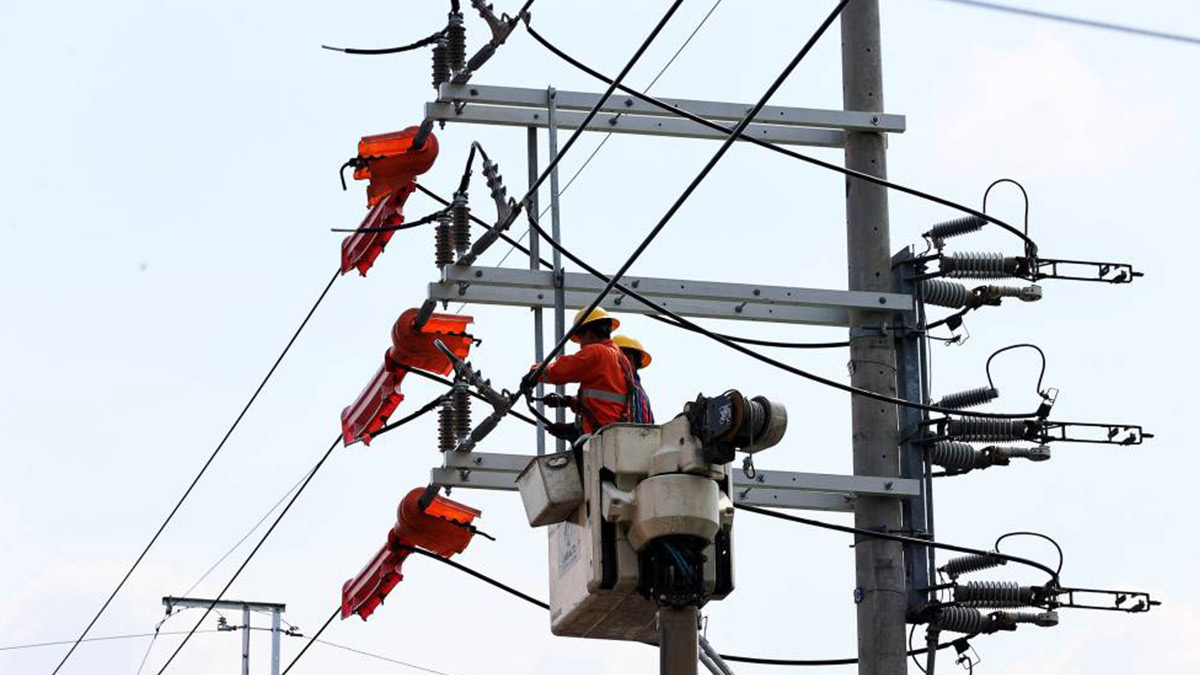MANILA, Philippines — Metro Manila and nearby provinces may still be hit by power interruptions this week, as available power supply in the Luzon grid is expected to be just enough to meet projected peak customer demand and the requirements of the power grid.
This means that in case of emergency shutdowns of power plants or a big reduction in their output, power cuts may have to be implemented to preserve the integrity of the grid, according to Manila Electric Co. (Meralco).
READ: Luzon grid on yellow alert — NGCP
As of June 2, grid operator National Grid Corporation of the Philippines (NGCP) said Luzon had 14,276 megawatts of available capacity, higher than the 11,572 MW over the weekend when the Luzon grid was placed on red alert.
“We are currently experiencing peak demand of 12,000-13,000 MW, so I hope there are no further unplanned outages and deration in the current generating capacity that we have. That being the case, we should be able to get through the next days, albeit reserves may likely remain thin,” said Joe Zaldarriaga, Meralco spokesperson and head of corporate communications.
“However, as what we have seen also last June 1, an emergency shutdown of a plant could significantly affect our available supply, so there will always be that risk. Unless more generating capacities become available soon, then rotational power interruptions will still be a possibility,” Zaldarriaga said.
‘Inconvenience’
On Saturday, Metro Manila and nearby areas suffered power interruptions due to inadequate power supply.
Meralco said it had to implement power interruptions or manual load dropping (MLD) in its franchise area, lasting an average of 1.5 hours.
The company began implementing MLD at 2:17 p.m., and electricity services were fully restored the same day at 11:47 p.m.
This affected almost two million Meralco customers in parts of Metro Manila and the provinces of Batangas, Bulacan, Cavite, Laguna, Pampanga, Rizal and Quezon.
“Due to the significant supply deficiency, rotational power interruptions had to be implemented across Luzon, including in Meralco’s service areas, to manage the current system condition,” Zaldarriaga said.
When a red alert is raised, Meralco must implement rotating power interruptions across its franchise area to manage demand and help keep the power grid stable.
“We sincerely apologize to our customers for the inconvenience caused by this challenging situation. We continue to proactively exhaust all demand-side management efforts to help minimize, if not avert, power interruptions,” he added.
NGCP raised red and yellow alerts in Luzon last Saturday as several power plants were unavailable to cover the spike in electricity demand.
The Luzon grid lost a total of 4,682.3 MW of power supply, but conditions had normalized by Sunday, according to NGCP.
A red alert is hoisted when the available power supply is insufficient to meet customer demand and the requirement to keep the transmission grid stable. Under a red alert situation, chances are great that there will be power cuts.
Under a yellow alert, there is still enough supply to meet demand, but the difference in operating margin is insufficient to meet the contingency requirement of the transmission grid.
Supply deficit
NGCP said that in the case of Luzon, the operating margin should be 668 megawatts, equivalent to the capacity of the largest power plant in the populous island group, to avoid red or yellow alerts.
When there is a supply shortfall, power service providers like Meralco can ask big customers to use their own generator sets through the interruptible load program instead of getting electricity from the grid to help avoid rotating power interruptions.
But over the weekend, even with commercial and industrial customers temporarily disconnecting from the power grid and using their own combined 200 MW, the supply deficit in the country’s largest island was still so big that interruptions were inevitable.
